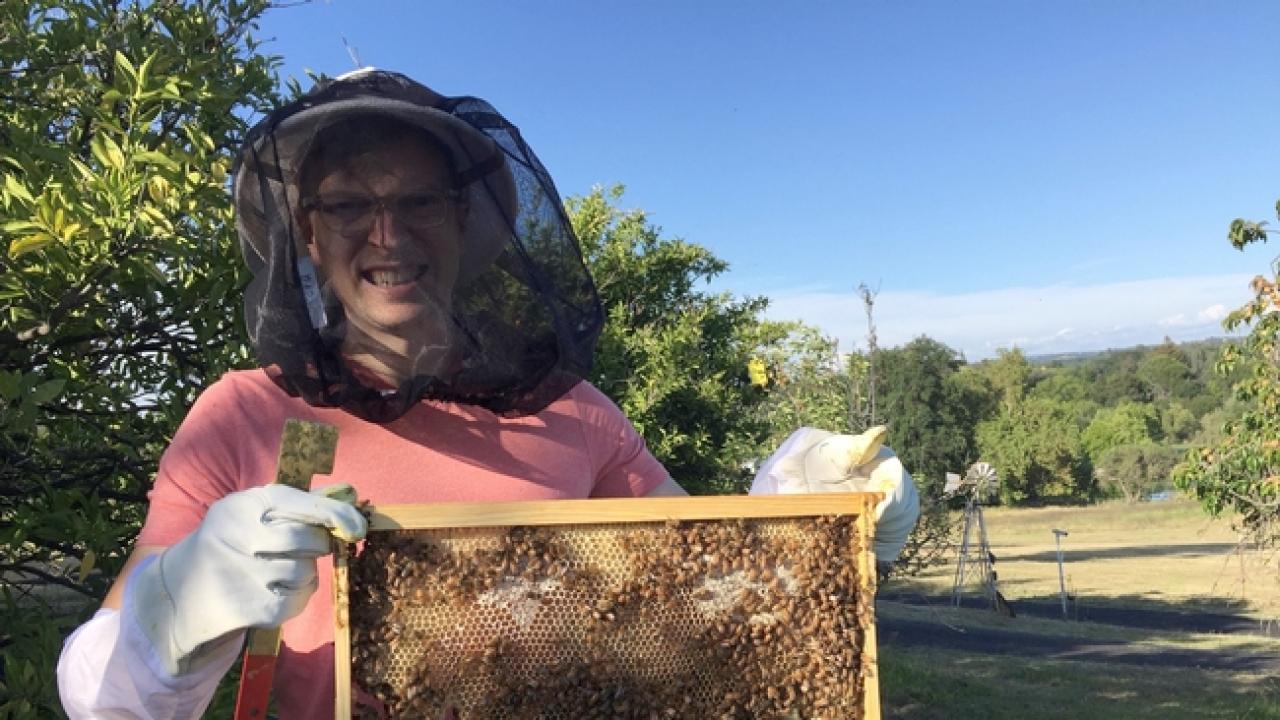
Honeybee Health Key to Agriculture
Bees are one of our planet's most important animals. They produce honey and they are the primary managed pollinators for a majority of high value specialty crops grown in the contiguous states of California and Oregon, such as nuts, stone fruits, vegetables, and berries. A problem looms for our animal friends, the bees. Colony losses are high due to a variety of environmental and biological causes including bacterial diseases. Historically, beekeepers have self-prescribed antibiotics to control these diseases.
Enter UC Davis and Oregon State University to aid beekeepers in addressing the problem of antibiotic resistance and antimicrobial use in the feed or water of food-producing animals, namely, protecting the health and safety of bees. The overall strategy leads to a safer food supply because the potential for antibiotic resistance is reduced.
The Western Institute for Food Safety and Security (WIFSS), UC Cooperative Extension, and UC Davis School of Veterinary Medicine are partnering with Oregon State University in a USDA funded multi-state specialty crop project to develop CE training for veterinarians on bee health and antibiotic use — a practice that is now regulated under the Veterinary Feed Directive (VFD). The project will offer a comprehensive bee biology online course and train-the-trainer practical training for veterinarians and apiculture educators. The ultimate goals are to protect the specialty crop — honey — from becoming contaminated with antibiotic residues; to protect the health and safety of bees, which are essential to California agriculture; and, finally, to support veterinary oversight in the use of antibiotics, which will lead to an overall reduction of antibiotic resistant bacteria in the environment.
